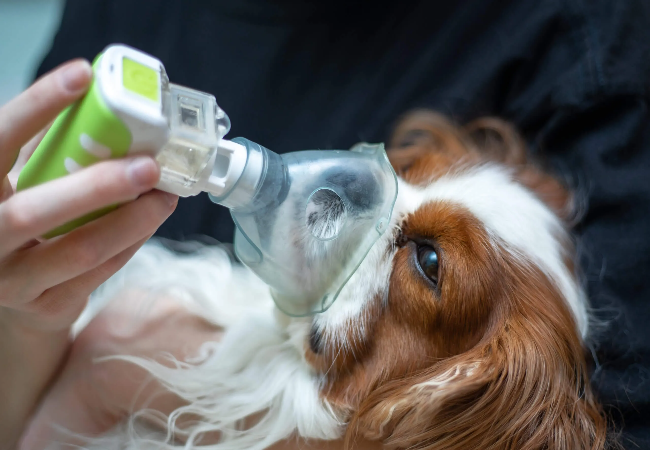Lung Cancer in Dogs: Vet’s Guide to Signs, Diagnosis & Treatment 2025 🐾

In this article
Lung Cancer in Dogs: Vet’s Guide to Signs, Diagnosis & Treatment 2025 🐾
By Dr. Duncan Houston BVSc
Hi—I’m Dr Duncan Houston BVSc, veterinarian and Ask A Vet founder. Lung cancer is rare in dogs (~1 % of canine cancers), but when it appears—especially in older dogs—it’s essential to act quickly. This vet‑approved guide will help you:
- Recognize common signs
- Understand how it's diagnosed and staged
- Know treatment options—surgery, chemo/radiation, palliative care
- Expect likely outcomes and recovery
- Support your dog at home
1. What Is Lung Cancer in Dogs?
It can be:
- Primary – originating in the lungs (usually bronchoalveolar carcinoma).
- Metastatic – spread from another cancer elsewhere.
Primary forms occur mostly in dogs aged 9–11, with carcinomas graded I–III based on aggressiveness.
2. Common Signs & Secondary Effects
- 🌬️ Persistent cough, sometimes with blood.
- Breathing faster or labored, exercise intolerance, lethargy, weight loss, appetite drop.
- Paraneoplastic effects like hypertrophic osteopathy—limb swelling and lameness.
3. Diagnosis & Staging
- ⬜ Chest X-rays and CT scans—detect nodules and plan surgery.
- Microscopy via needle aspirate, bronchoscopy, or biopsy—confirm type and malignancy.
- Abdomen imaging and lymph node assessment—to check for spread.
- Pathologic staging:
- Stage I: single tumor, no spread
- Stage II–III: larger or lymph node spread
- Stage IV: distant metastasis.
4. Treatment Options
4.1 Surgery (Lobectomy)
- Primary option if no metastasis—removal of affected lobe and nodes.
- Often curative for stage I, with many dogs recovering quickly.
4.2 Chemotherapy & Radiation
- Adjuvant chemo (vinorelbine, carboplatin) for metastatic or high-grade tumors.
- Stereotactic body radiation (SBRT) is used when surgery isn't feasible.
4.3 Palliative & Supportive Care
- Thoracocentesis for fluid in the chest
- Pain relief: NSAIDs, corticosteroids
- Cough suppressants, bronchodilators, and antibiotics for infections.
- Home environment: calm, easy feeding, avoid smoke/irritants.
5. Prognosis & Survival Times
- Stage I, low-grade tumors: survival often 12–16 months, sometimes >2 years.
- Advanced or metastatic: median survival 2–3 months.
- Chemo can extend survival modestly for unsuitable surgery cases.
6. Quality‑of‑Life Considerations
- Work with oncologists to weigh treatment benefits vs. stress and side effects.
- Palliative care focuses on comfort if treatment not pursued.
- Stay attuned: appetite, breathing, mobility, joy in daily life.
📌 Final Thoughts from a Vet
Though rare, lung cancer in dogs can be treated effectively—especially when caught early. Surgery offers the best chance of long-term survival for localized tumors; chemo/radiation and palliative care support quality of life when surgery isn't an option. At Ask A Vet, we provide treatment planning, symptom tracking tools, and comfort care strategies to support you and your dog through every stage. 🐾❤️






